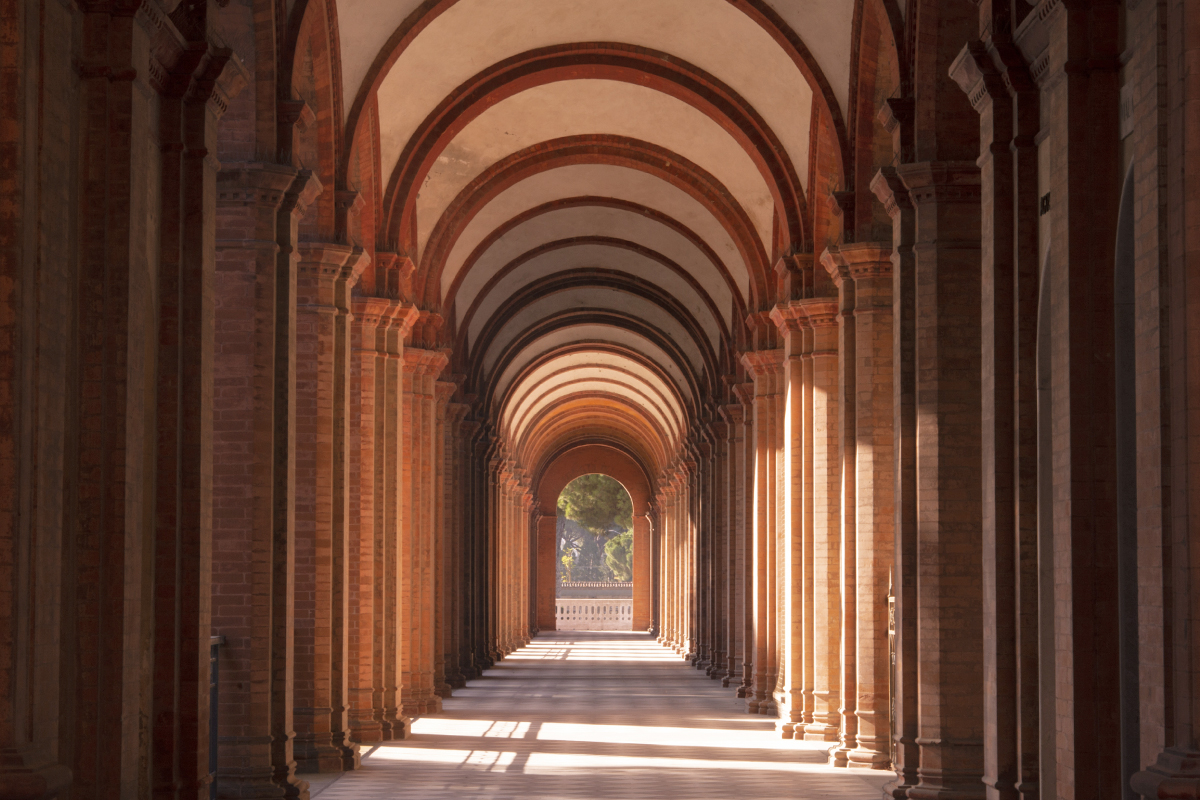The MONUMENTAL CEMETERY OF RAVENNA is located on the bank of the Candiano canal, three kilometres away from the city centre.
It was founded in 1817, at the time of tthe Napoleonic Republic, when the structure of the city was highly modified and the burial places were moved to “sunny and airy” spaces out of the city centre.
The monumental part dates back to 1878 and was realised on a design by engineer Romolo Conti, modelled on the Carthusian monasteries of the Lombardy region, and particularly on the one of Milan.
From the architectural point of view, the structure features two overlapping levels, reflecting the class division of the time.
The funenrary monuments of the upper floor, under the large porticoes, are true works of art. On the lower floor, in the basement scarsely lightened up by porthole-shaped windows, are the burial places of people from lower classes.
This monumental cemetery is the burial place of various historical figures who had a very important role in the history of Italy and Ravenna. Among these ones are: Corrado Ricci, Luigi Rasi, Filippo Mordani, Francesco Negri. It is also possible to see memorials dedicated to the fallen in the battles for the Unification of Italy and World War I.
The then Superintendent Corrado Ricci describes the atmosphere permeated by a poignant sense of memory and cultivated nostalgia for a past that is individual but at the same time collective:
“Vast, lonely, full of poetry is the place chosen by the Municipality of Ravenna in 1817 to make its cemetery. On the banks of the Corsini or Candiano canal, three kilometres from the city, it has a pinewood behind it, then wide stretches of land furrowed by canals, then the sea”.
Corrado Ricci (The Ravenna Guide, 1923)








